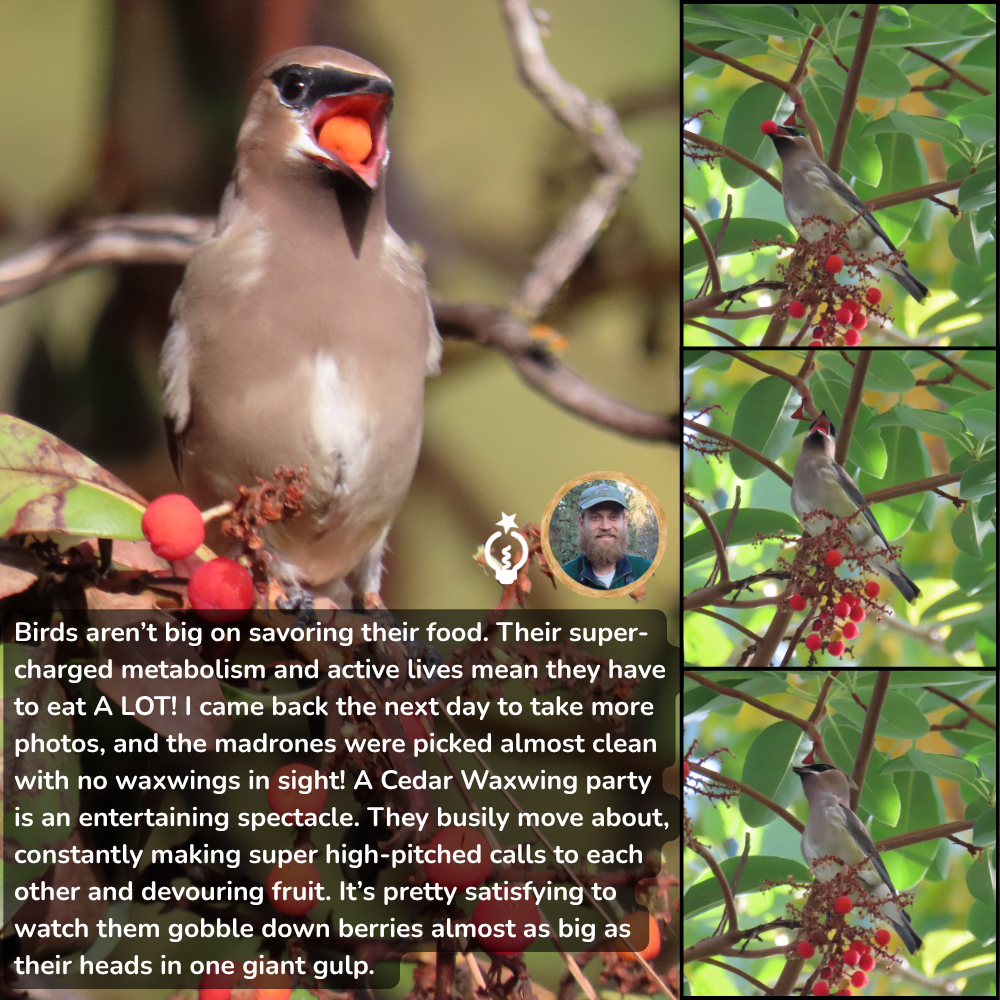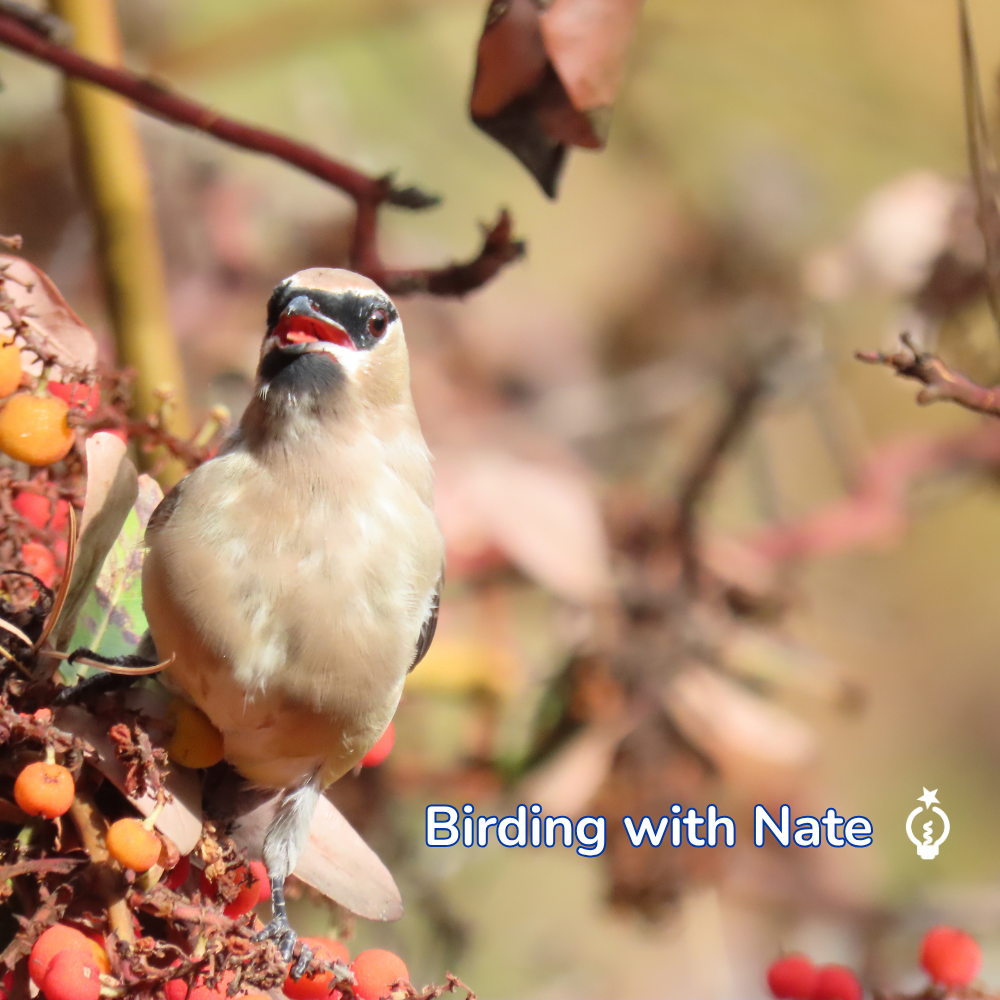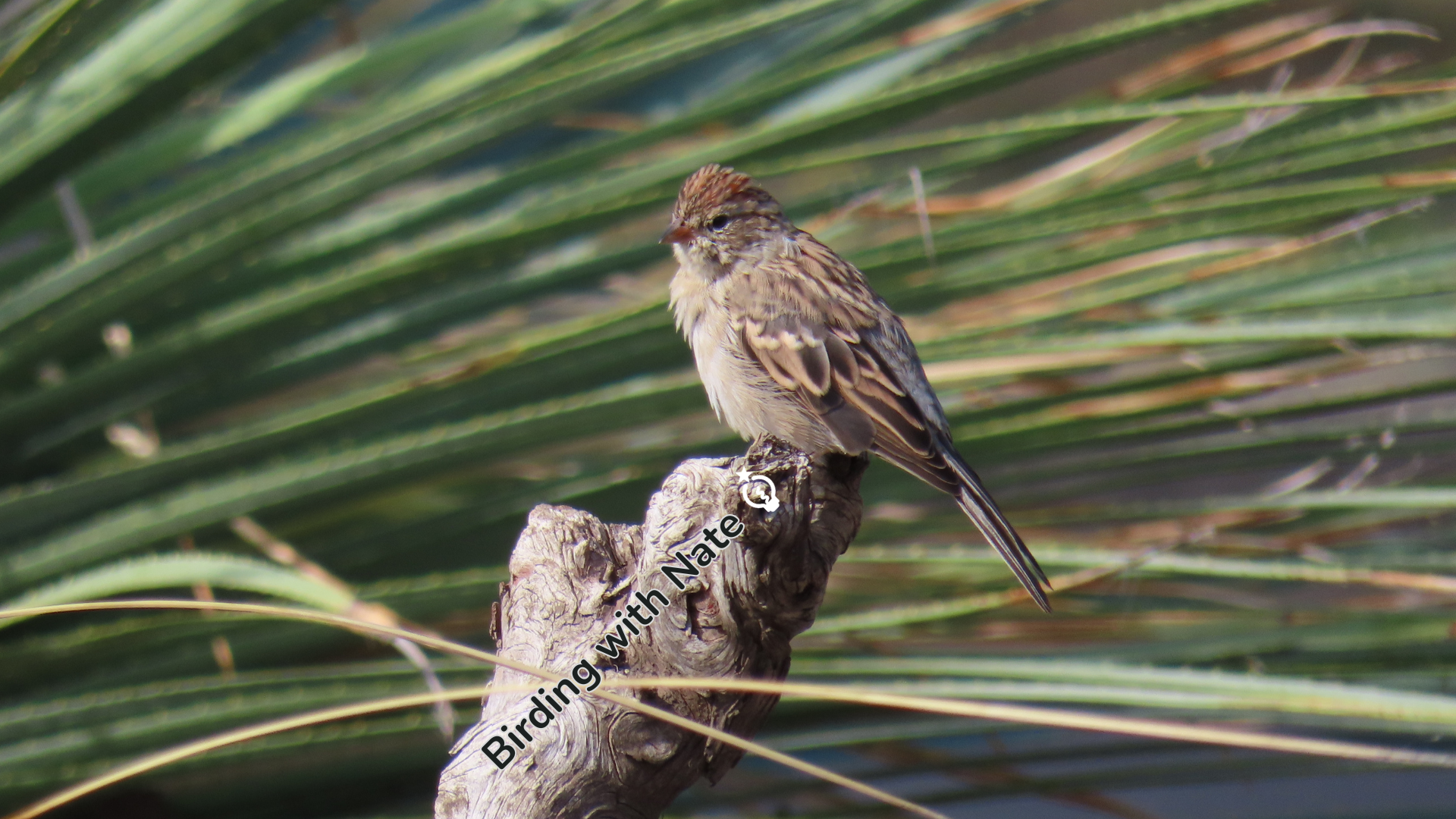Birding With Nate — October Bird of the Month: Cedar Waxwing
Birding with Nate
October Bird of the Month: Cedar Waxwing









Hello ScienceWorks friends!
Your bird of the month for October is the Cedar Waxwing. These beautiful, elegant birds can be found in Southern Oregon year-round. In fall and winter, they form large, noisy flocks as they roam the countryside in search of berries to feast on.
Waxwings are easy to identify by their velvety, caramel-latte-colored feathers, crested heads, bandit-like masks, and bright red and yellow accents on their wings and tails.
Waxwings are named for the bright red waxy substance on the end of some of their wing feathers. Juveniles are streaked and mottled.
I found a big flock of these guys on October 22, socializing in the big cottonwood trees next to the covered bike parking at the south end of ScienceWorks. They created quite a beautiful autumn color palette with the bright orange-yellow leaves of the cottonwoods.
I caught these birds showing some interesting behavior. They were collecting plant fibers and passing them to each other, as well as feeding each other berries. I’m not exactly sure why they do this, but waxwings and many other birds will give “nuptial gifts” of nest material or food during courtship to prospective mates. These guys aren’t nesting this time of year, but it may be a case of them practicing their moves during the off-season.
These birds didn’t come to ScienceWorks for the pretty foliage, however. They discovered a couple of small fruiting madrone trees and were feasting on the ripe berries. Between cramming as many berries as they could into their stomachs, they rested and flirted in the cottonwoods.
Birds aren’t big on savoring their food. Their supercharged metabolism and active lives mean they have to eat A LOT! I came back the next day to take more photos, and the madrones were picked almost clean with no waxwings in sight! A Cedar Waxwing party is an entertaining spectacle. They busily move about, constantly making super high-pitched calls to each other and devouring fruit. It’s pretty satisfying to watch them gobble down berries almost as big as their heads in one giant gulp.
Southern Oregon seems to be having a big year for madrone berries, and I’ve been hearing waxwings everywhere in recent weeks. Listen for their distinctive high-pitched calls and watch for them zooming through the air in tight flocks. If you have madrone trees in your neighborhood, you’re likely to see a large flock of these beautiful birds feasting and socializing in the branches this fall or winter. Keep an eye out near any fruiting trees or shrubs.
Happy Birding!
And don't forget to add your own bird sightings to the ScienceWorks eBird Hotspot!







